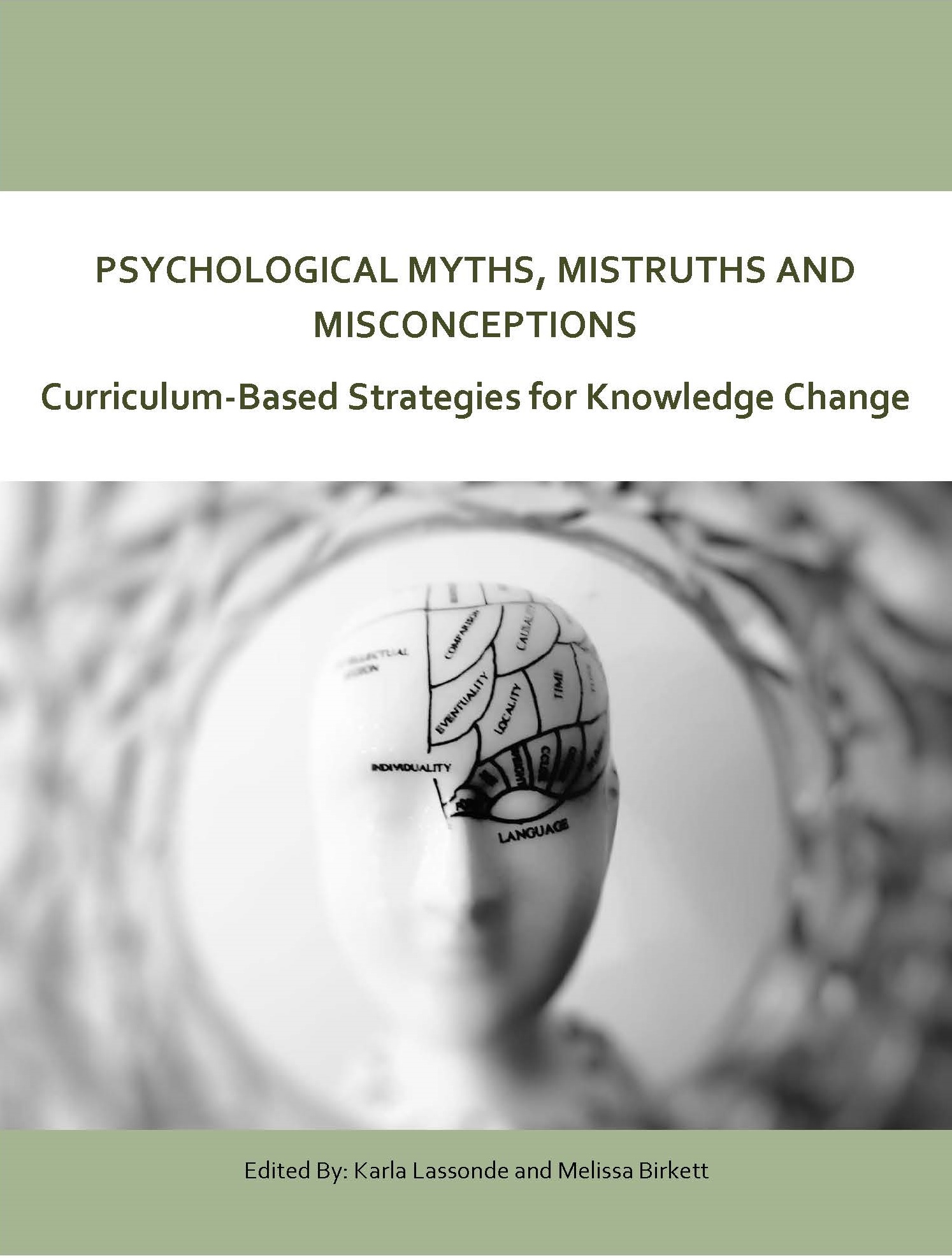Table of Contents
| Introduction |
5 |
| Chapter 1. Using the Fact/Myth/Fallacy Essay to Address Psychological Misconceptions in the Classroom |
7 |
| Chapter 2. Changing Minds in the Classroom: The Effects of Counter-Attitudinal Advocacy |
18 |
| Chapter 3. Teaching Science via Assessment of Paranormal Claims |
24 |
| Chapter 4. Not Just Mind Over Matter: Overcoming Misconceptions about Psychological Disorders |
31 |
| Chapter 5. Do You Have a Left Brain or a Right Brain Personality? An Elementary School Lesson in a College Classroom |
38 |
| Chapter 6. Mythbusting Toolkit: Applying Scientific Literacy Skills to the Evaluation of Myths and Misconceptions |
46 |
| Chapter 7. A Step Beyond Transforming Misconceptions: Using Photovoice Pedagogy to Foster Transformative Learning in Educational Psychology Courses |
55 |
| Chapter 8. To Refute or Not Refute, That is the Question: The Case for Creating Myth Debunking Posters with Psychology Students |
62 |
| Chapter 9. Building information literacy through consideration of claims in psychology: Evaluating credibility and evidence in sources |
71 |
| Chapter 10. “Wolf in Sheep’s Clothing”: Why Critical Thinking Is Critical When Searching for Information on The Internet |
92 |
| Chapter 11. Right, Wrong, or Somewhere in Between? Using a Multi-step Project to Promote Deep Learning and Creative, Critical Thinking About a Myth or Misconception |
96 |
| Chapter 12. Buckle Your Seatbelts, It’s Time to Study Myths and Misconceptions |
114 |
| Chapter 13. Building a Foundation of Critical Thinking, Scientific Inquiry, and Communication as Essential Skills for the Psychology Major |
130 |
| Chapter 14. Careers in Psychology: Challenging the Myth that the Psychology Bachelor’s Degree Leads to Only One Career Pathway |
144 |
Feedback
Feedback regarding the editorial content of this book or any of its chapters should be directed toward the individual authors. Feedback regarding technical matters of formatting or accessibility of this text via the online environment of the Internet should be directed to the Internet Editor. If you have any complaints or difficulties in accessing these materials, be sure to provide as detailed a description of your problem(s) as you can; you should include information about the browser you are using and its version number well as the type of computer you are using and its operating system.
Copyright and Other Legal Notices
The individual essays and chapters contained within this collection are Copyright © 2021 by their respective authors. This collection of essays and chapters as a compendium is Copyright © 2021 Society for the Teaching of Psychology. You may print multiple copies of these materials for your own personal use, including use in your classes and/or sharing with individual colleagues as long as the author's name and institution, and a notice that the materials were obtained from the website of the Society for the Teaching of Psychology (STP) appear on the copied document. For research and archival purposes, public libraries and libraries at schools, colleges, universities and similar educational institutions may print and store in their research or lending collections multiple copies of this compendium as a whole without seeking further permission of STP. The editors would appreciate receiving a pro forma notice of any such library use. No other permission is granted to you to print, copy, reproduce, or distribute additional copies of these materials. Anyone who wishes to print, copy, reproduce, or distribute copies for other purposes must obtain the permission of the individual copyright owners. Particular care should be taken to seek permission from the respective copyright holder(s) for any commercial or "for profit" use of these materials.
Suggested Reference Format
For the overall text, reference the book in this fashion:
Lassonde, K. A., & Birkett, M. (Editors.). (2021). Psychological myths, mistruths and misconceptions: Curriculum-based strategies for knowledge change. Society for the Teaching of Psychology. http://teachpsych.org/ebooks/mythsmistruths
Individual chapters should be referenced in this fashion:
Kowalski, P., & Taylor, A. J. (2021). Using the fact/myth/fallacy essay to address psychological misconceptions in the classroom. In K. Lassonde & M. Birkett (Editors.), Psychological myths, mistruths and misconceptions: Curriculum-based strategies for knowledge change (pp. 6-20). Society for the Teaching of Psychology. http://teachpsych.org/ebooks/mythsmistruths

